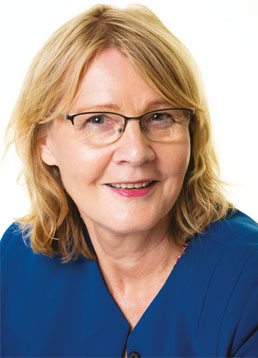When the coronavirus pandemic began, the universities took quick action. The doors were slammed firmly shut, and we switched to remote teaching overnight. University teachers moved their lessons to Zoom or Teams and learned to create educational videos. Excellent new digital education solutions were developed and adopted. Whenever possible, hybrid teaching was also available, with some of the students physically present in class and the rest participating via remote connections. Many overexerted themselves and the yearly maximum working hours were exceeded by numerous teachers.
The leadership of the universities was particularly vocal in lauding the successful digital leap, with many teachers also developing their lessons with unprecedented enthusiasm after getting a taste of remote teaching.
Lengthy lectures became short moments of teaching and active group discussions between the students on Zoom. Remote teaching shook up the ossified concepts of good education, resulting in amazing educational leaps to complement the digital leap. Good practices for remote teaching were developed. Students were grateful because remote teaching gave their studies flexibility and independence of time and place.
However, in the autumn, many teachers began to report fatigue and exhaustion. Workdays built around Zoom meetings and Zoom lectures were taking their toll. On the laptop screen, colleagues and students would only appear in the form of user avatars and initials — faceless. The community was gone, and the loneliness felt oppressive. Students also became fatigued and exhausted. First-year students in particular were considerably more anxious and exhausted than in previous years. Many teachers stated they already longed to be able to meet their colleagues and students face to face.
Now, the third period is about to begin, and all teaching is conducted primarily remotely. At least the future is already looking brighter at this stage, thanks to the start of COVID vaccinations. Maybe we can manage through this spring remotely and get to return to a normal university in the autumn? Maybe we can push ourselves to teach remotely for one more term?
But we can’t do this alone any longer. We need the support of our academic community, and our students are part of this community. We need proper spaces and equipment to do our jobs.
Quality teaching and in-depth learning both require quiet spaces and the ability to concentrate. In addition to spaces to facilitate concentration, we also need spaces suited for cooperative work.
As the exceptional situation has gone on, it has also raised the question of whether a university teacher is meant to also get the proper work equipment for themselves and pay for a peaceful workspace. The home does not offer a quiet space for everyone. If you can’t come to the campus, and library doors are equally firmly shut, where are you meant to find a space to teach or study and who is going to pay for it?
Quality remote teaching requires stable online connections, large screens, good acoustics, and proper lighting. High quality, high level remote teaching is not accomplished by staring at a tiny laptop screen at the corner of the dinner table.
High quality, high level teaching is accomplished through an academic community’s cooperative work based on research, as a result of mutual dialogue and development. The universities must provide their researchers, teachers, and students with the best possible spaces and equipment. We require face to face contact with each other. This pandemic has taught us that.

Text: Anne Nevgi
Docent, University Lecturer of Higher Education, University of Helsinki
English translation: Marko Saajanaho